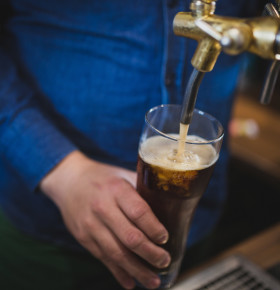
 I like to use predictive analysis when doing research. I like to create a model that predicts which factors will have the strongest impact on research objectives. I recently developed a predictive model to help a client see which activities by a brand sales team best help to maximize product buy-in by new accounts.
I like to use predictive analysis when doing research. I like to create a model that predicts which factors will have the strongest impact on research objectives. I recently developed a predictive model to help a client see which activities by a brand sales team best help to maximize product buy-in by new accounts.
This is not about experiential marketing. It’s about a marketing program designed to help a brand of beer acquire new accounts for its products. The client directs a team of sales specialists across U.S. markets. Each is responsible for selling the brand to new accounts. PortMA analyzes the sales activities performed at each account. The objective is to learn what activities are most effective in gaining account buy-in.
Each time a sales specialist visits an account, they record the total cases of beer distributed and their activity at the account via an online portal. This provides the dependent variable in a predictive model. It indicates whether or not the account has bought in, as well as the number of cases purchased.
Create a List of Variables
The first step in the predictive analysis was to create a list of all of the possible activities that sales specialists perform at each account. These are the independent variables that might impact the number of cases sold to the account. Activities include bartender training, branded glassware used, consumer sampling events, promotions, and visibility at point of sale (POS).
Build a Predictive Model
The second step was to build the model itself. I assumed that all activities had some positive relationship to the number of cases distributed.
I decided to run a step-wise linear regression analysis to remove activities that would not be reliable predictors.
The program ran several iterations using data from about 3,800 unique accounts. The program crunched the data until it settled on a model that best fit the need. Activities determined to be the most reliable predictors included:
- Bartender training – perfect pour
- Branded glassware sold
- POS visibility on tables
- POS visibility behind the bar
- POS visibility other (e.g., frames and mirrors)
- Number of days with a beer special promoted
- Seasonal food and beer pairing conducted
Each of these was estimated to have a potentially significant, positive impact on the number of cases distributed at new accounts. They weren’t the only predictors. They were the best available.
The conclusion isn’t that sales teams should concentrate only on these activities. It is that these activities should not be ignored, especially in the early stages of a campaign.
The predictors can apply either for teams immersing themselves in a new account or participating in an experiential marketing program.
